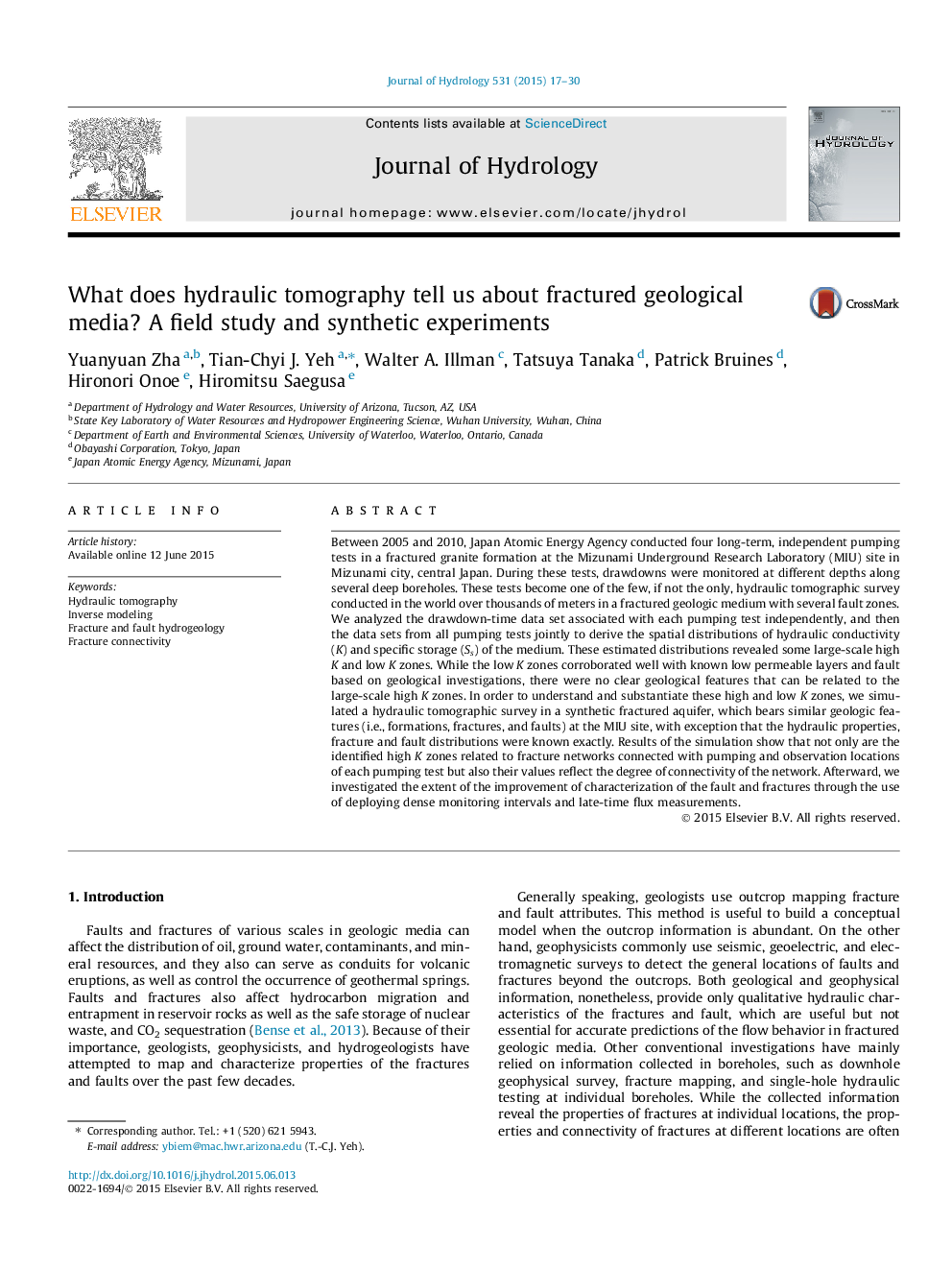| کد مقاله | کد نشریه | سال انتشار | مقاله انگلیسی | نسخه تمام متن |
|---|---|---|---|---|
| 4575876 | 1332880 | 2015 | 14 صفحه PDF | دانلود رایگان |
• Hydraulic tomography is a viable tool for characterizing fault zone hydrogeology.
• Estimated high conductivity zones represent connected fracture network.
• Additional flux measurements improve mapping fracture connectivity.
Between 2005 and 2010, Japan Atomic Energy Agency conducted four long-term, independent pumping tests in a fractured granite formation at the Mizunami Underground Research Laboratory (MIU) site in Mizunami city, central Japan. During these tests, drawdowns were monitored at different depths along several deep boreholes. These tests become one of the few, if not the only, hydraulic tomographic survey conducted in the world over thousands of meters in a fractured geologic medium with several fault zones. We analyzed the drawdown-time data set associated with each pumping test independently, and then the data sets from all pumping tests jointly to derive the spatial distributions of hydraulic conductivity (K) and specific storage (Ss) of the medium. These estimated distributions revealed some large-scale high K and low K zones. While the low K zones corroborated well with known low permeable layers and fault based on geological investigations, there were no clear geological features that can be related to the large-scale high K zones. In order to understand and substantiate these high and low K zones, we simulated a hydraulic tomographic survey in a synthetic fractured aquifer, which bears similar geologic features (i.e., formations, fractures, and faults) at the MIU site, with exception that the hydraulic properties, fracture and fault distributions were known exactly. Results of the simulation show that not only are the identified high K zones related to fracture networks connected with pumping and observation locations of each pumping test but also their values reflect the degree of connectivity of the network. Afterward, we investigated the extent of the improvement of characterization of the fault and fractures through the use of deploying dense monitoring intervals and late-time flux measurements.
Journal: Journal of Hydrology - Volume 531, Part 1, December 2015, Pages 17–30
